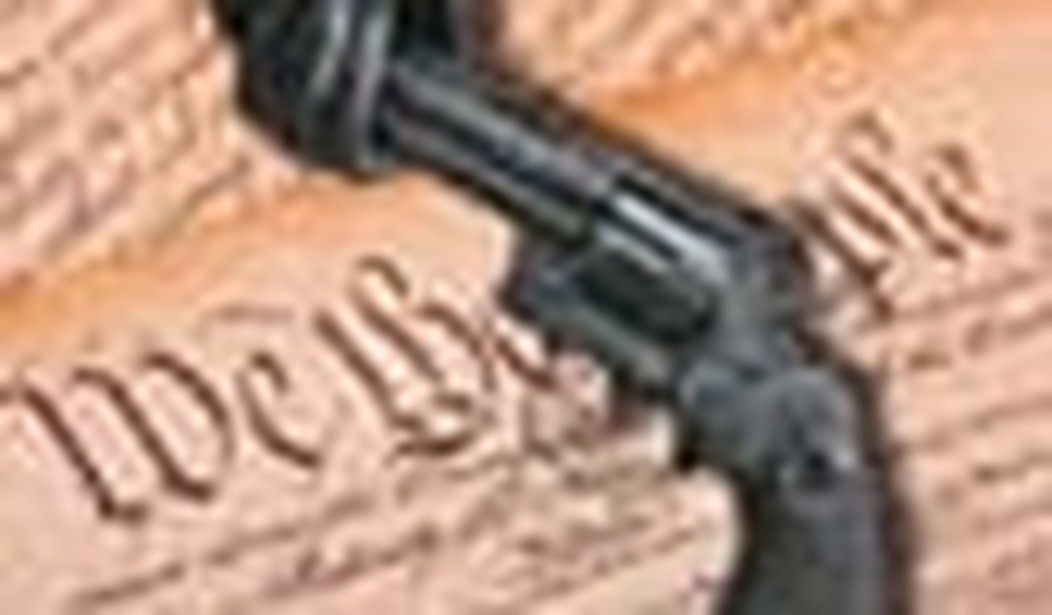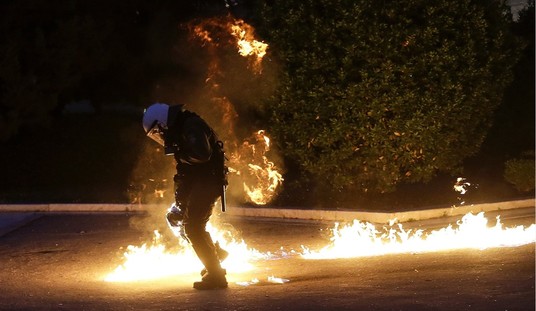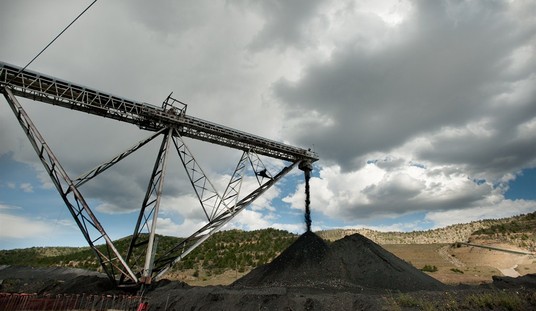The latest active shooter attack at Fort Hood, Texas on April 2, 2014 left three dead and 16 wounded. As is almost always the case, the killer, confronted with armed resistance, choose suicide, ending the rampage. The Army has released a timeline that indicates that the attack lasted something over eight minutes, but the timeline fails to note how much time passed between the first shot and the first 911 call, which means the actual time was likely about ten minutes.
This will become significant shortly. The gun that anti-freedom forces love to demonize, the AR-15 with its standard 30 round magazine, was not involved. Instead, the killer used only a commonly available .45 caliber semiautomatic handgun.
As all mass attacks do, this one has reanimated the gun control debate, but this time, anti-freedom advocates have a unique handicap. It may seem counterintuitive and surprising to many, but continental United States military installations are a gun-free anti-gunner’s dream. They are even more strictly regulated than many schools. Soldiers, airmen, sailors and marines are nowhere as thoroughly disarmed as they are on American military bases.
The only people allowed to bear arms on military bases are usually military police officers, and then, only during the hours they are actually on duty. They draw their weapons and ammunition from an armory just before their duty hours begin and turn them in when done. There are a few exceptions, among them Criminal Investigation Division investigators who may sometimes wear civilian clothing and are authorized to carry concealed weapons even when technically off duty. Pilots, under certain circumstances, are also allowed to carry weapons as part of their issued equipment. And officers on duty in missile silos and in other duties where nuclear weapon security are involved are also armed. However, most members of our military, from the lowliest private to a general commanding a base, are disarmed.
Consider the irony. A seasoned combat veteran abroad in Iraq or Afghanistan may usually carry their weapon wherever they go, at all hours. When they return to the United States, they may obtain a concealed carry permit in the state where they are stationed and carry a handgun most places in that state, but the moment they step on base, they lose not only their Second Amendment rights, but the ability to protect their very lives. They are less well protected on base in the United States than they were in an active war zone. In most states, Joe Average Civilian is better protected than our warriors. At least Joe has a choice.
Military regulations allow gun ownership for those living on base, but their weapons must normally be stored in a military armory and may be removed only to take the gun off base for hunting, shooting, etc. and returned when they return to the base. With few exceptions, such as civilian police officers, no one may bring a privately owned firearm on base.
Washington is aroused to the level of talk. President Obama sprang into action:
Speaking at a fundraiser shortly after the killings became public knowledge, President Obama told donors he was ‘heartbroken’ and promised to get answers as to the cause.” No doubt he’ll seek those answers with all of the determination and transparency used to get answers in the Fast and Furious Benghazi and IRS cases.
Homeland security chairman Rep. Mike McCaul, R-Texas, told Megyn Kelly he thinks soldiers should be able to carrying arms on base. ‘The problem here, and with Fort Hood, the prior Nidal Hasan case, is that they couldn’t defend themselves because they were not allowed to carry weapons’ McCaul said, adding he thinks lawmakers need to revisit the current restrictions. In Hawaii, Defense Secretary Chuck Hagel was asked about the safety and security of military posts and bases. ‘When we have these kinds of tragedies on our bases, something’s not working,’ Hagel said.
That’s the kind of insight for which Secretary Hagel is infamous. Given the regulations in place, these kinds of tragedies are utterly predictable. Unlike the Fort Hood attack perpetrated by Muslim terrorist Major Hasan, and egregiously mislabeled by the Obama Administration, denying its victims the decorations and benefits due them, this attack appears to be an actual case of workplace violence.
There have been additional suggestions: more gun control policies essentially making military installations double gun-free zones, heightened screening of anyone entering bases, enhanced mental health measures, even more military police officers. None of these can possibly be effective. The two Ft. Hood attacks can only serve to advertise to our terrorist enemies—of whom there are many in America—and to deranged domestic shooters that military installations—just like schools—are excellent places to attack, soft targets promising many helpless victims to be shot at leisure before any effective response can be mounted. Compare this attack to Sandy Hook Elementary:
The first 911 call to the Newtown police occurred at 9:35:39. The first officer arrived at 9:39, but no officers entered the building until 9:44:47, nine minutes and eight seconds after the 911 call. Lanza began his attack at 9:30 and shot himself at 9:40:03, four minutes and 44 seconds before the first officer entered the building. He had more than ten uninterrupted minutes before he shot himself. If he wished, he could have had at least five minutes more.
At Fort Hood, the same factors were present. The killer had approximately ten minutes uninterrupted to kill, his only restraints being the availability of unarmed victims and his own marksmanship. When a police officer confronted him, he almost immediately shot himself. The same was true at Sandy Hook, where the shooter, knowing the police would soon arrive, killed himself.
This is the pattern of these crimes. At the December, 2012 attack at the Clackamas Mall in Oregon, the killer managed to murder only two people before being confronted by an armed citizen and killing himself.
Unfortunately, spending millions on mental health initiatives will be ineffective. It’s simply not possible to reliably identify those who pose an imminent danger to others, or to predict their future actions. The Sandy Hook shooter had many treatment opportunities over many years, yet the official report on that attack stated:
It is important to note that it is unknown, what contribution, if any, the shooter’s mental health issues made to his attack on HES. Those mental health professionals who saw him did not see anything that would have predicted his future behavior.
While the Ft. Hood killer had been in war zones, he apparently saw no combat. He was under psychological evaluation, but it appears this was due to issues not specifically related to his military experiences:
The Army has said that Specialist Lopez…had been undergoing evaluation for post-traumatic stress disorder and treatment for depression and anxiety. But the post commander, Lt. Gen. Mark A. Milley, said…that his ‘underlying medical conditions’ were not a direct factor in the shootings.
As with the Sandy Hook killer, military psychologists saw no indication of his violent intentions. Indeed, most people seeking psychological treatment are not violent, and certainly not murderously violent.
Most military installations have a very high level of military and civilian traffic on and off base, particularly during normal business hours. Entry points are guarded by lower-ranking military police, and absent special security situations, do not routinely search individuals or their vehicles. Such searches would slow traffic—and the necessary functions of the installation—to a standstill.
Particularly at a time when the Commander in Chief is determined to reduce military manpower and readiness to pre-Pearl Harbor levels, the possibility of significantly increasing the number of military police officers is slight. This too is no solution. In order to put one officer on the streets 24/7/365 at least four new officers must be trained and stationed: three for 3 eight-hour shifts, and at least one to cover for absences due to training, vacation, illness and other issues.
Military police also share many of same limitations of their civilian counterparts. They patrol areas the size of towns, and are a reactive force. In many cases, there are more military police officers on duty than in a town of similar size, yet their response time at the Fort Hood attack was no faster than that at Sandy Hook or other mass shooting attacks, and they are virtually always no better armed than civilian officers.
Unfortunately, under Barack Obama, all that is likely to be done to protect those that protect us is talk, when what is needed is one simple action: allow qualified military members to carry firearms. When a shooter begins his attack, what matters is not the number of military police on a base, its mental health services, its access procedures or more gun laws and regulations. What matters is how quickly the killer will faced an armed response.
When military bases—and schools—are no longer gun-free victim disarmament zones, attacks will be deterred because attackers will know they will be highly likely to be immediately met with gunfire, and on a military installation, gunfire done by trained and particularly capable shooters. Those not deterred are likely to be stopped before they can harm anyone.
Our soldiers, airmen, sailors, marines—and our teachers and children—deserve no less.









Join the conversation as a VIP Member